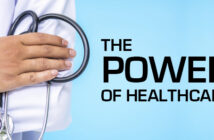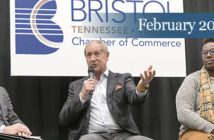Photo above: Wynne Tyree, CEO Smarty Pants
By Scott Robertson
Most people know great branding from merely good branding. And in our media-savvy culture, even kids can tell good branding from bad. The tough part – especially for a business owner trying to brand a product, service or company – is knowing how to create a great brand. For most of us, great branding is analogous to the late U.S. Supreme Court Justice Potter Stewart’s description of pornography: “I can’t define (it),” he said, “but I know it when I see it.”
Wynne Tyree can define it. Tyree’s Johnson City, Tenn.-based research and strategy firm, Smarty Pants, is one of the leading branding consultants in America today. The company’s client list includes Coca-Cola, Disney, Frito-Lay, Google, Hershey’s, Hilton, Lego, McDonald’s, Microsoft, P&G, PepsiCo and Target, to name but a few.
A Kingsport native, Tyree graduated from Syracuse University before taking a position on Madison Avenue. “I started my career at an ad agency working in a division that had this product called the brand-asset-valuator,” Tyree says. “It was a quantitative global study of brands. That’s where I fell in love with branding and learned the importance of how to build brands. So now I’m both a research practitioner and a brand steward helping companies grow their brands.”
Why brands matter
“This sounds cheesy,” Tyree says, “but branding is so important because at the end of the day, products are products are products. Yes, they might have differences, but brands are what people are really buying. Brands comfort people. Brands guarantee things to people. Brands let people know what to expect.
Great branding allows people to give your company credit for doing certain things without making them go through the decision-making process time and time again, Tyree says. Customers know yours is a brand they can rely on and trust.
“The success formula in terms of branding begins with the awareness piece,” Tyree explains. “You can’t be a great brand if nobody knows you. So there’s communications, marketing and awareness building. Then there has to be clarity. A lot of brands suffer from ‘we want to be everything to all people.’ Consumers often think of those brands as standing for nothing if they even know who they are. So having a clear identity and letting people know what I can come to you for is critical. Having some sort of differentiating proposition is critical too. And then the brand has to indicate desirability. Are all those things we just mentioned in service of something people actually want? It has to be something that has some meaning in people’s lives, and creating that desire is a very different campaign than creating awareness, which is different than punctuating what makes you different.”
Local brands’ mindspace
With that established, and with Tyree holding the unique position of being both a consumer in the region and a national branding expert, The Business Journal asked about Tyree’s brand perception regarding the best-known brands in the Tri-Cities, TN/VA. Those brands, Tyree says, “own a small space in my mind, and it’s very clear what that space is.” The end game, The Journal and Tyree agreed, was to examine what the best brands in the region do right in an informative and interesting way, not just to make a “best brands” list.
First, The Journal and Tyree shared our own lists of recognizable regional brands in no particular order. Below are several of Tyree’s instantaneous responses on what space each brand occupies in her mind.
Pal’s Sudden Service: “When I think of Pal’s, I see something iconic. The branding is laser-focused. It’s clear about what it does and doesn’t do. You know it’s about convenience, value, great taste and that whole idea of ‘Sudden Service.’ That brand is something I associate with this region, too. The marketing is kitschy and quirky and unique. If I were a tourist, I would want to try out this thing they have here.”
ETSU: “In the branding world, we talk about tent poles. If you imagine your brand being a great white tent, then the tent-poles that support ETSU’s brand might be education, athletics, partnerships in the community, the med school, the pharmacy school – ETSU has a lot of tent poles. Outside of medicine, I don’t have a strong opinion of academics. It just feels like a random liberal arts commuter school. But while we’re on ETSU, an individual can be a brand. When I hear the name Niswonger, I think of this region. I think of the children’s hospital, the digital media center at ETSU, the foundation and the philanthropic and educational tie-ins Scott Niswonger has.”
 Cootie Brown’s: “Cootie Brown’s is a regional brand that proves you can be quirky and unique, but still be reliable.”
Cootie Brown’s: “Cootie Brown’s is a regional brand that proves you can be quirky and unique, but still be reliable.”
Ballad Health: “Unknown, emerging, but like BrightRidge (until recently known as the Johnson City Power Board), it is going to have to get past that initial period of, ‘wait, now who runs it?’ Right now, the Ballad brand just doesn’t have a lot of innate meaning. The equity there was in the Mountain States brand. Mountain States Health Alliance was very transparent. Those words take your mind to places like “this region” and “Appalachian” in positive ways. When I hear “Ballad Health” I can’t go anywhere with it. It could be a healthcare system in Missouri. That name just doesn’t have any brand equity yet.
Eastman Credit Union: “Customer-centric, unique and distinct from banks. Their communication talks about milestones in life like going to college or buying your first home, so they are doing a great job of portraying themselves as a good partner in doing something wise with your money while still being sort of an ‘unbank.’”
Dr. Enuf: “Oh, that is a great one. Like Pal’s, it goes back to being clear and simple. There are just a couple of core products and that’s it. They stay in their lane very well. It’s sort of undermarketed, but it feels like that’s intentional, like it’s part of the cachet. I think of it as like a pride point for our region. There’s still some sort of medicinal halo around it, and they talk about that, that the use of ‘Dr.’ is intentional. It’s got this feeling of being a relic, but in a good way, as something that has a lot of history and equity around connecting to an old school way of life. It never got co-opted in a Mountain Dew kind of way.”
Tri-Cities Airport: “Well, they live in a crappy category. People will go there if the price is right and the distance is right, just purely for functionality. So they’re playing in a very commoditized sandbox. They’ve done a good job redoing the façade outside, but they need to keep on going.”
Bristol Motor Speedway: “That’s one of the most iconic brands in the region. If you travel around the country and say Bristol, people will say, ‘As in the Bristol Motor Speedway?’ Beyond just the physical presence, there’s an experience there that’s unique and compelling. It is a hallmark, pinnacle institution of the region.”
The Carnegie Hotel: “I think of it as the premiere hotel – not convention center, but hotel – in the region. It embraces its heritage. It has a nice, wedding-centric, small business meeting-centric aura.”
MeadowView Conference Resort & Convention Center: “The location for big things and big events. It just feels like, ‘we can accommodate you.’”
Martha Washington Inn: “A hidden gem that’s not too hidden. An upscale getaway. You would go there for a two-night weekend anniversary getaway.”
Barter Theatre: “It is to live theatre what Bristol Motor Speedway is to NASCAR. It’s a premiere destination venue. Like the Martha Washington Inn, it feels very dated, but in a positive way, and intentionally. It’s important that they haven’t changed the name because of the history relating to bartering. That’s smart.”
International Storytelling Center/National Storytelling Festival: “Again, nationally and internationally, people know this brand. Locally, people don’t seem to have the same appreciation. People I work with elsewhere in the country know Jonesborough, Tennessee because of this brand. It’s All-American. The physical structure is up-to-date and feels inviting. It’s focused on its mission of keeping something important alive. It’s another brand that does a good job of staying in its lane.”
Bristol Rhythm & Roots Reunion: “Has a stronger brand right now than the National Storytelling Festival. It is an interesting bridge between local and not local. It heralds and trumpets the fact that this is the place something popular, not just country music, but the Americana music scene, kind of came from. It’s well done and it is well marketed. Hearing its name takes you right to a stage, a guitar, a physical event.”
Bank of Tennessee: “I associate it with Mr. (Bill) Greene (founder). It’s small-business-centric. It has a strong brand as a local or regional bank as opposed to a bank headquartered elsewhere. They’ve built a brand that makes them feel approachable.”
Summers-Taylor: “Home-grown success. When it comes to knowing your category, and your exact wheelhouse, I think of Summers-Taylor and paving.”
Eastman: “As far as our region goes, it is the lifeblood of thousands of families. I grew up about a minute from Eastman, so my first thoughts are of Eastman as community steward. It’s not business-to-consumer, so most people probably have no idea what products it makes now – Cigarette filters? Glass? But those same people know how important it is as an ally to the region.”
 How’d they do that?
How’d they do that?
So what are the branding lessons one learns from looking at how the best brands in the region accomplish their goals? What do they have in common besides success?
“Well,” Tyree says, “The best regional brands have been clear about their vision and mission. They have been clear about their areas of expertise, and they have stuck with it. They know their lane and they are just driving down it. In addition, they have marketed and messaged in a way to stay top of mind and to remind people not only why they are here, but what makes them different. Their messaging and communication connects and emotes.”
That last word – emotes – is key, Tyree says. “The way to consumers’ wallets is through their hearts. People at the end of the day don’t make decisions based on logic. They make decisions based on feelings. So just sharing the facts of what you offer is never effective. All effective branding and marketing needs an emotional hook.”
So what’s the emotional end-game? “At Bristol Motor Speedway it might be ‘being a part of something you can never experience anywhere else.’ Or ‘being well taken care of in a way that I’m going to feel like the caregivers are family’ could be a direction that Ballad Health might go,” Tyree says. “People don’t want health care. They want to be taken care of. From an emotional standpoint, those are very different things.
“In order for me as a consumer to let you into my mind, your message has to touch me in some way. If you look at the best advertisers – Eastman Credit Union, the Bristol Motor Speedway – there is some emotional piece that makes you think, ‘I want to be a part of that.’”
“Those brands that give me something to emotionally connect to in exchange for letting them in have a more effective call to action that as a consumer, I’m listening to,” Tyree says. “Those who are winning locally are inviting people in like that.” That’s the payoff for branding, why businesses spend so much time and energy mastering their brand. “Branding keeps customers loyal.”




